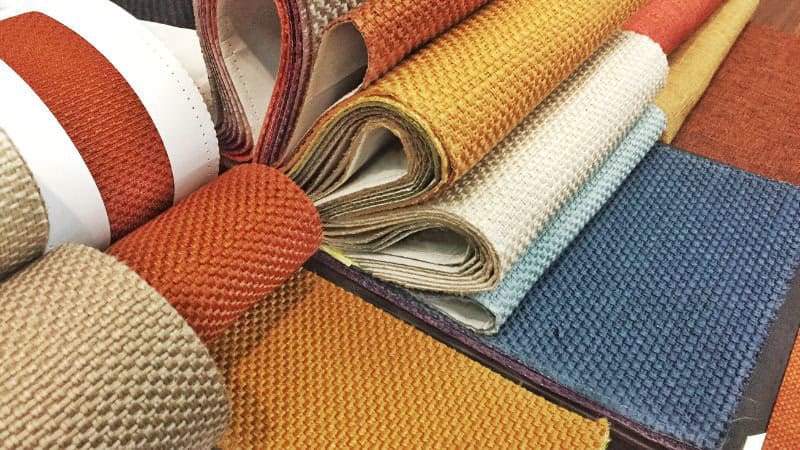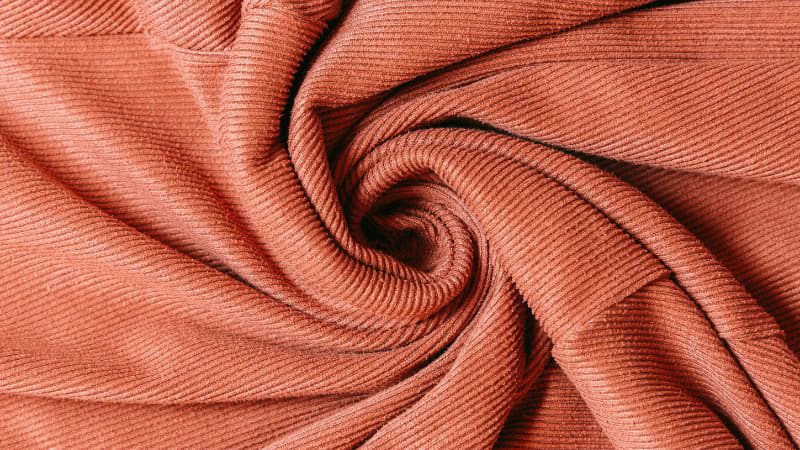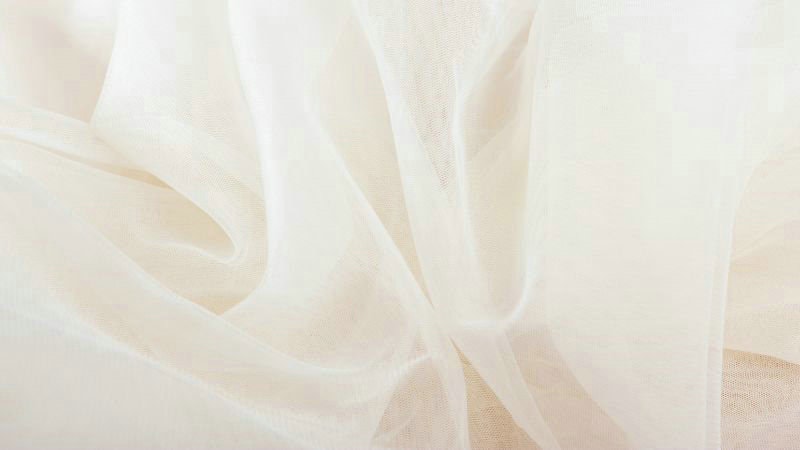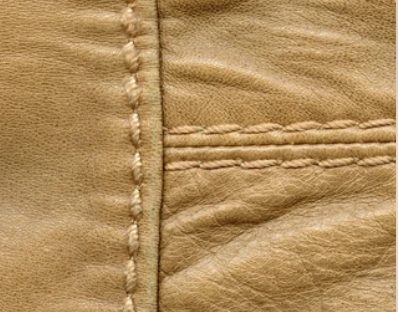PU leather, also known as synthetic leather or leather, is reputable for being 100% vegan, and hence a more preferred option to real leather for anyone averse to animal cruelty and the homemaker on a budget.
If you’re looking for ways to give your interior decor an authentic finish, then you should think about PU leather finishings. Ideal for several types of home or interior styles such as industrial, boho, or rustic.
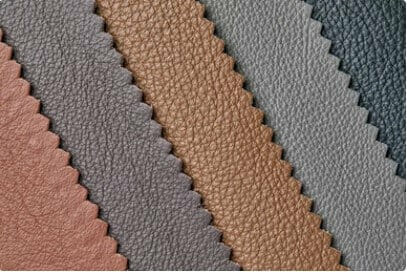
What is PU Material?
PU materials are synthetic leather materials made from thermoplastic polymer.
There are two kinds of PU leather types: semi-synthetic and full-synthetic PU leather materials.
Semi-synthetic PU leather, also known as split leather, is produced with a base made of actual leather and a top made from a polyurethane binder mixture.
Full-synthetic PU leather, on the other hand, is made from a polymer base covered by a plastic covering.
PU leather’s naming diversity reflects its versatility:
- Technical use → Polyurethane Leather, PU Synthetic Leather
- Aesthetic appeal → Patent Leather, Satin PU
- Ethical marketing → Vegan Leather, Eco-Leather
- Functional design → PUL, Microfiber Leather
Pros and Cons of PU Leather
Advantages of PU Leather:
- Cost-Effective: Cheaper than genuine leather.
- Versatile Design Options: Wide variety of colors, textures, and finishes can be choose.
- Easy To Maintain: Water-resistant and easy to clean with a damp cloth.
- Vegan-Friendly: PU leather is made of 100% synthetic which is a cruelty-free alternative to genuine leather.
- Consistent Appearance: Offers a uniform look without the natural blemishes of animal hides.
Disadvantages of PU Leather:
- Lower Durability: More susceptible to tearing, puncturing, and peeling.
- Less Breathable: Can be uncomfortable in direct contact with skin.
- Environmental Concerns: PU is not biodegradable and its production may have environmental implications.
The Manufacturing Process of PU Leather
Manufacturers make PU leather by laminating a 100% polyurethane coating to a fabric or a combination of other materials called the base material. The materials used as a base are rayon, cotton, nylon, or polyester.
To give it the texture and appearance of real leather, they use rollers to apply an artificial grain pattern to it. This patterned texture is often uniform and reflects the final desired outcome (smooth, rough, etc.)

After this procedure, the PU layer is treated with chemicals to boost its durability and resistance to moisture and stains.
The History of PU Leather
The earliest notable examples was Presstoff, a German invention from the 19th century made from specially layered and treated paper pulp.
The Applications of PU Leather
Fashion and Apparel
- Clothing: Jackets, trousers, skirts, leggings, and shorts.
- Footwear: From boots and heels to sneakers.
- Accessories: Handbags, purses, wallets, belts, and watch straps.
Furniture and Upholstery
- Seating: Sofas, armchairs, dining chairs, and office chairs.
- Bar Stools and Ottomans: Its resilience to spills and stains makes it ideal for use in hospitality and home entertainment areas.
Automotive and Transport Interiors
- Car Seats: Resistant to wear and tear from daily use.
- Interior Trim: Steering wheel covers, door panels, gear shift knobs, and dashboard elements.
- Public Transport: The interiors of buses, trains, and airplanes often use PU leather for seating due to its robustness and low maintenance requirements.
What are the Advantages of Using PU Car Upholstery?
A car interior is a high-wear environment. It’s exposed to sunlight, temperature fluctuations, spills, and constant friction. PU leather performs exceptionally well under these conditions.
- UV Resistance: It is more resistant to fading and cracking from sun exposure than many other materials, including some types of genuine leather.
- Abrasion Resistance: It holds up well against the daily wear and tear of passengers getting in and out of the vehicle.
- Water and Stain Resistance: Spills from coffee, juice, or water tend to bead on the surface and can be wiped away easily without staining.
*Shop for Car upholstery? Visit Sinocomfort.
How to tell if it is Polyurethane Leather?
There are several other factors that can help you in identifying PU leather. These include:
The Smell
PU leather products have a characteristic plastic or chemical smell.
However, the smell fizzes out with age. Hence it might be challenging to detect that smell in a product that is not brand-new.
The Texture
PU leather maintains its texture throughout use, unlike genuine leather which gets softer and more relaxed with use. Although they look alike, their textures can give them away.
The Pores
Pore spaces are another way to tell if you are with authentic leather or not. The fake leather has tiny pores that are not clearly visible, whereas full-grain leather has large pores that are easily noticeable.
The Edges
Describing the material solely by looking at its edge can be challenging, as many synthetic materials may have finishes that resemble natural leather.
The Price
PU leather costs less than full-grain leather. Ideally, the price stamp should indicate if the material you want to purchase is PU leather. Although there are online scammers who would like to defraud others, wholesale and retail shops would sell artificial leather for a significantly cheaper price, unlike real leather.
Water Test
The real leather is not waterproof. It absorbs water and stain, whereas PU leather is water and stain resistant, increasing its durability.

PU Leather VS Genuine Leather: How to Choose
Of course. Here is a comparison table outlining the key differences between PU Leather and Genuine Leather.
| Feature | PU Leather | Genuine Leather |
| Material Origin | Synthetic | Natural; made from treated and tanned animal hides |
| Cost | Less expensive | More expensive |
| Durability | Less durable |
Highly durable and strong Last for decades with proper care |
| Appearance | Uniform and consistent texture and color | Unique, with natural variations, grains, and imperfections |
| Breathability | Not breathable | Highly breathable due to its natural porous structure |
| Aging | Does not age or develop a patina | Develops a rich patina over time |
| Maintenance | Very easy to clean | Requires more maintenance. |
| Environmental Impact | Production is based on fossil fuels | The livestock industry has environmental footprint |
| Vegan Status | 100% vegan and cruelty-free | Not vegan |
PU and PUL: What are the Differences?
PU is the base polymer used in diverse products for durability and flexibility.
PUL is a fabric-PU hybrid engineered for waterproof, breathable applications like medical gear or eco-friendly diapers.
| Property | PU | PUL |
|---|---|---|
| Water Resistance | Moderate (unless specially treated) | High (designed as a barrier) |
| Breathability | Low to moderate | High (due to microporous laminate) |
| Flexibility | High (adaptable to shapes) | Varies with base fabric |
| Primary Use Case | Decorative, structural materials | Functional waterproof barriers |
PU and EVA: What are the Differences?
PU excels in wear resistance, longevity, and UV stability. EVA compresses over time, prone to wear in high-impact use.
| Property | PU | EVA |
|---|---|---|
| Density | Higher (1.05–1.25 g/cm³) | Lower (0.92–0.95 g/cm³)
|
| Weight | Heavier, more rigid | Lightweight, softer
|
| Tear Resistance | Excellent (strong molecular bonds) | Moderate (softer structure) |
| Temperature Tolerance | Up to 120°C (heat-resistant) | Softens >60°C; stays flexible at -50°C |
PU usually used in work boots, automotive parts, and furniture.
EVA often used in athletic shoes, sports padding, packaging and lightweight footwear.
Frequently Asked Questions
Is PU leather better than faux leather?
Although PU is not genuine leather, it is different from faux leather. Whereas PU leather makes use of polyurethane, faux leather makes use of materials such as wax, dye, and polyvinyl chloride. Aside from composition, both serve as substitutes for genuine leather.
Is PU plastic or leather?
PU (polyurethane) is a synthetic polymer (plastic). PU leather combines a plastic PU coating with a fabric base (e.g., polyester) to mimic leather.
Is PU leather good?
It depends. Suitable for budget-friendly, short-term use; inferior for longevity.
Is PU leather toxic to humans?
No significant risk when fully cured. PU is generally non-toxic and eco-friendly once manufactured, though production involves chemicals.
Is PU leather feels like real leather?
Superficially yes, but not identical. High-quality PU leather can mimic leather’s softness and texture, but often feels colder, plasticky, and less supple.
Is PU leather vegan leather?
Yes. Polyurethane leather uses no animal products, making it a vegan alternative to genuine leather.



